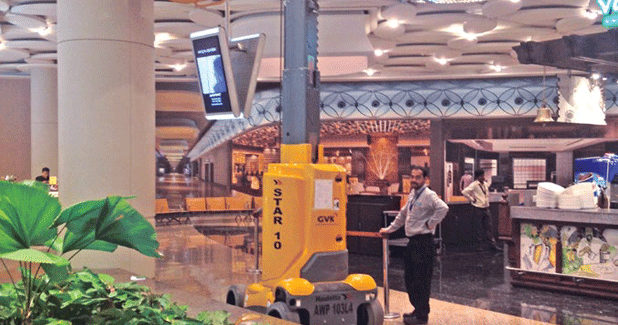
Safety at Heights
There are international safety norms which are governed by certain standard levels in the US and in Europe. In Australia, the industry follows certain standards. For each standard, there are different types of safety parameters. Since 85-90 per cent of world AWP market belong to the US and Europe, there is no Indian standard specifically. However, safety is imperative for any kind of work, especially when working at heights. There are about 5,000 various types of AWPs in use in India out of which, two-third are booms.
When machines are required to work at greater heights, it involves an added stage for safety wherein the machine calculates the allowable horizontal outreach for the machine and restricts the movement of the machine once this outreach is reached, thus averting any chance of the machine tipping over. When these machines reach higher heights the machine software calculates the optimum speed and thereby gives a very smooth and safe operation.
Tackling emergency situations
During an emergency, there are two ways where a person can be brought safely to the ground.
In an event, the personnel is incapacitated from the platform and the engine in running condition, there is an emergency system vide which from the lower control box can bypass the system and bring the person down to the ground level.
Secondly, in an event where there is a failure of the primary source of power, i.e. engine or the electric motor, adequate measures are taken to switch over to auxiliary emergency system to bring down the trapped person to the ground level.
Safety in high reach boom lifts
In high reach boom lifts, up to 5 per cent of dip, it can withstand in terms of tilt and maximum 10 per cent of gradient on which it can travel. There are also interlocks within the machine so that if somebody is working at a particular height and there is a hydraulics failure takes place, the booms will not come down. When there is a cylinder failure in between operation, the operator can be brought down with the use of auxiliary power which is battery-operated which will operate the hydraulic system.
Rough terrain applications
The differentiation for rough terrain application is primarily with respect to drive function in higher range machines. These machines come with hydrostatic drive which has a smooth response. The boom lifts are also equipped with oscillating axles, which provide a smooth driving experience in rough terrain conditions.
Safety features
The following are the desirable and recommended safety features associated with AWPs offered by most leading brands:
Overload system - Cuts off function from the platform when the machine platform is overloaded.
Tilt cut-off system - It cuts specific functions of the machine which assist in increasing horizontal reach of the machine when the entire machine slope has exceeded the permissible limit.
Radius limitation - Cuts off movement for the machine if it exceeds its designed reach radius.
Back up emergency system - Present on the lower control box can be activated when the operator on the upper control box in incapacitated to bring the operator down safely.
Once the operator brings the machine to the normal operating environment all these features reset themselves as per design.
Speed control: The speed and above all the progression on the speed of a function at different levels of machine plays a vital role in safe usage of the machine, thus reducing the risk to life of people working with and around the machine. This is primarily achieved by the software installed on the machine which takes feedback from the different sensors installed and allows movement with respect to the outputs received by it.
Collision prevention: Collisions are primarily averted by an alert operator who is primarily conscious of his and machine?s surroundings. There can be an option of soft touch system which primarily cuts the operation in an event where the basket comes very near to an obstacle with the help of proximity sensors.
Structural deformation: Generally OEMs provide structural warranty on their machines. However, if there is any structural damage owing to an accident, based on inspection results, they recommend to change the entire affected area.
Power failure: In case of failure of the drive power (electrical or engine), there is an auxiliary system present in the machine, which aids in bringing the stuck personnel down and thereafter carry out the repair procedures so as to bring the machine in fully functional state.
Safety for productivity
Although India is the most prominent emerging economy in the world today, there is a severe lacuna in concern towards safety. The general thought is that investment towards safety is an unnecessary burden whilst it actually enhances the productivity. Human life is the first and foremost thing and must be an integral part of any development. Even a small step to avoid injury or loss of life at work site is not only increases confidence of workers, morale of work force but increases productivity also. So it is foremost to have safety regulation in this area and be followed strictly by all stakeholders. It must be a united effort to make our work place safer and of course, government can take a lead in this regard.


 +91-22-24193000
+91-22-24193000 Subscriber@ASAPPinfoGlobal.com
Subscriber@ASAPPinfoGlobal.com